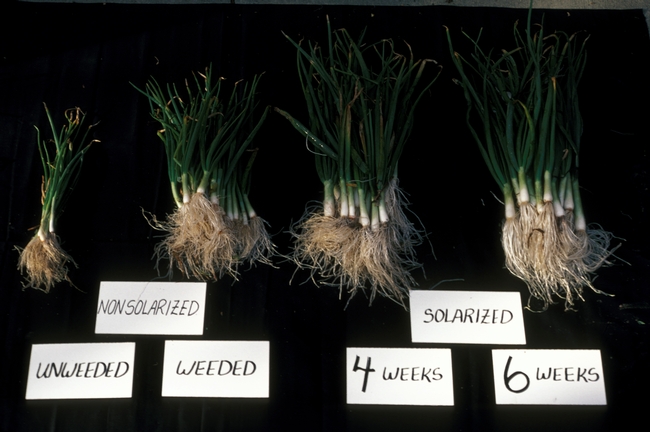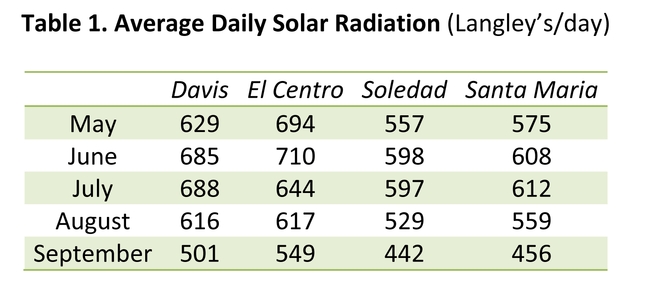You say, it is a little late in the summer to be talking about using soil solarization for weed control because it works best in the summer when the days are long with high temperatures. Maybe we can learn some things from past situations where control has been marginal or poor.
I have seen some locations where results could have been more dramatic, if instructions were followed more closely (Figure 1). Most of the pertinent information for successful solarization can be obtained from the UC IPM Online called Soil Solarization for Gardens and Landscapes or the publication Soil Solarization: A Nonpesticidal Method for Controlling Disease, Nematodes and Weeds.
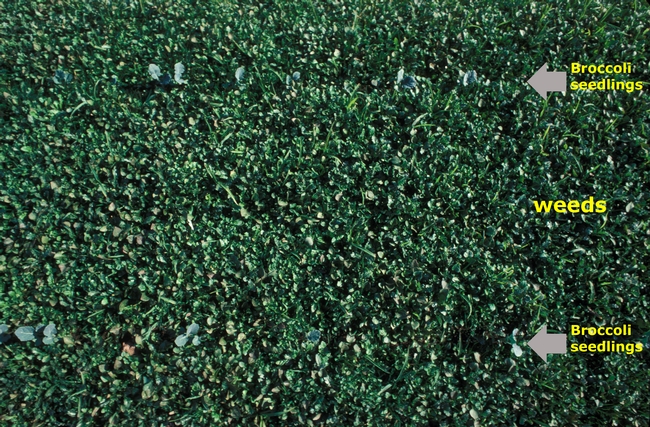
Four basics are needed for successful soil solarization: 1) a smooth, flat area preferably that has been cultivated; 2) a moist but not saturated soil; 3) 2 to 6 mil clear plastic covering the soil tightly; 4) and 4 to 6 weeks of clear (non-shade area) warm or hot weather. (Figure 2), Though solarization can give excellent weed control, it can also be less than outstanding under some circumstances.
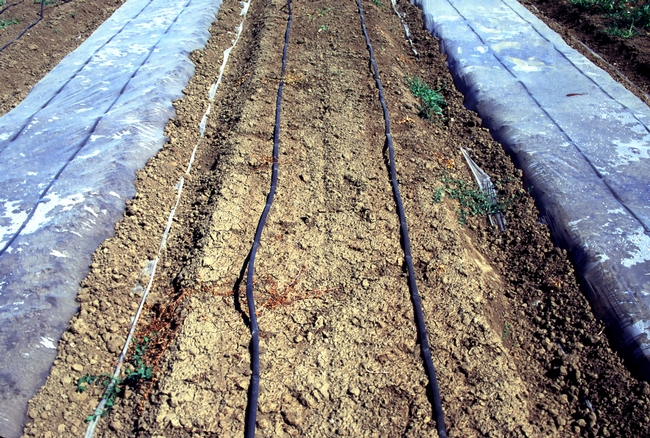
Let's say you want to plant a fall garden. You can plant vegetables on flat soil, but what happens if we plant on beds? Is there something you can do to make solarization more effective? People are using “soil solarization” for turf grass and weed control prior to replanting to a more drought tolerant landscape. Can this be effective?
For fall vegetables, a late summer solarization in July or August can be excellent. Afterwards, remove the plastic and without cultivating the soil, either direct seed or transplant. If beds are used, prepare the beds before laying the plastic, not after. To optimize the increase of temperature in the beds, run beds north and south to increase uniform heating. This prevents a shaded “cool side” or open “hot side” of beds. Bed width should be a minimum of 2 feet to decrease the edge effect of cooler temperatures. For any cultivation before planting, make it very shallow, so no new weeds are brought to the soil surface to germinate (Figures 3 and 4.)
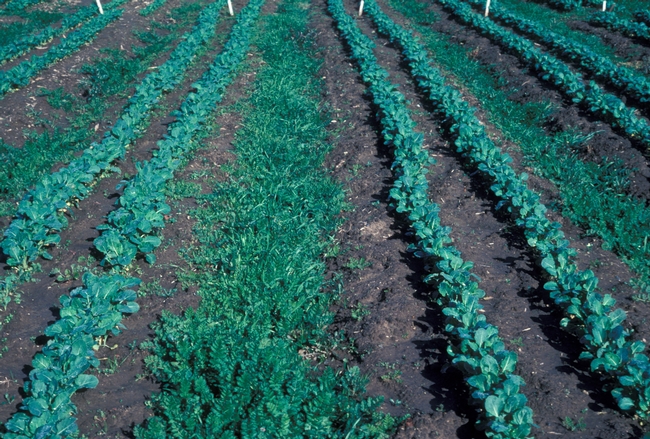
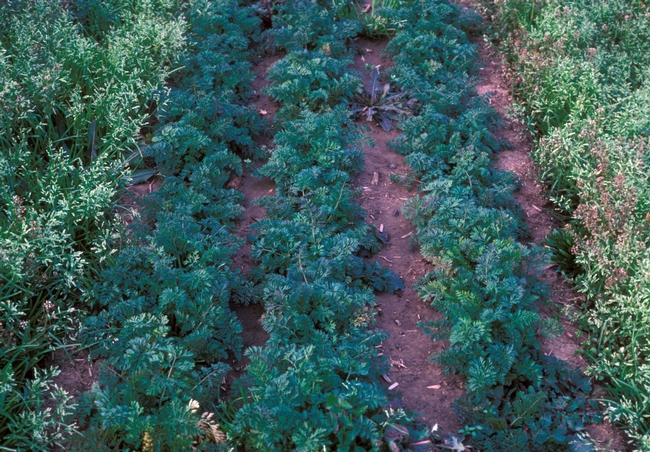
Remember, there is usually an increase in plant growth after solarization. There is a release of available nutrients and lack of competition with weeds, so the vegetables will be more vigorous (Figure 5).
If solarization is to be used around the landscape for turf grass control or for the control of all plants in the lawn area (Figure 6), the grass should be mowed as short as possible or preferably rototilled and the surface smoothed. Because the edges where the plastic is covered with soil will be cooler than in the center of the treated area, the edges should be extended beyond the edge of the grass. Often there is a lot of variation in the home turf areas. Sometimes they are on a slope or parts of the area are in shade of a tree or structure. Under these circumstances, unless the slope is facing south to the sun, decreased control will occur.
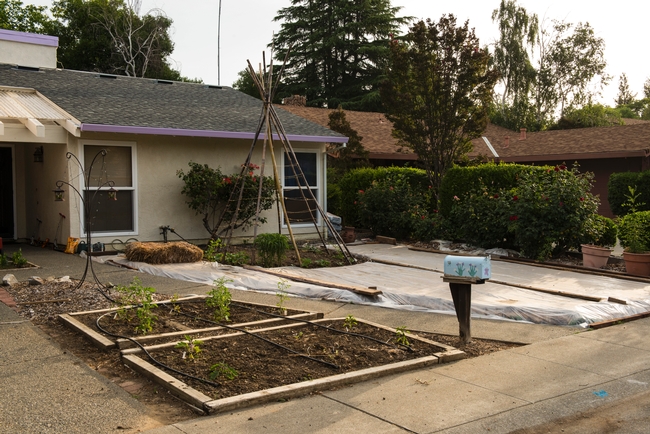
A rumor often heard is that solarization does not work for weed control in the coastal region of California. There are areas where many days have fog covers for much of the day, or heavy on-shore winds are a concern. In these areas, solarization may not be maximally effective in the mid-summer but would be more effective in the fall transition weather period. If you see a forecast of warm, clear, sunny days, “start” the solarization process. It is most critical for increased effectiveness that ‘heating' is started right after laying the plastic. If you start solarization with a few days of cool, foggy or cloudy weather, you find weeds germinating and thus reduce control. If one looks at the solar radiation measurements in the central valley and coastal areas they are reduced but still high enough for control of sensitive weeds (Table 1). The weed spectrum is different in many coastal areas compared to the hotter central valleys. Coastal areas often have high populations of annual bluegrass, other small grasses and common groundsel, prickly lettuce and annual sow thistle. These weeds are more easily controlled with solarization. Even cheeseweed is controlled in many locations.
Attached Files:
